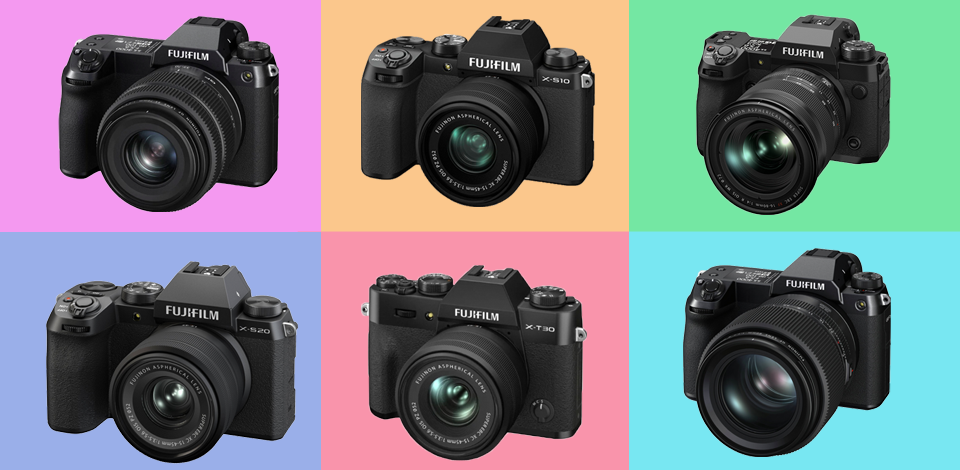
The best Fujifilm cameras come with powerful features that make them perfect for photographers with different levels of experience. The company knows how to recreate the film effect. Its cameras stand out for a variety of film simulation modes that recreate the style of widely-used films like Velvia and Astia. It makes these cameras the ideal choice for those who like a retro atmosphere and want to take professional-level photos with ease.
Fujifilm cameras can easily beat their competitors when it comes to image quality. They capture detailed pictures with rich colors. What’s more, they can fully replace expensive full-frame DSLRs, which makes them a viable alternative to consider.
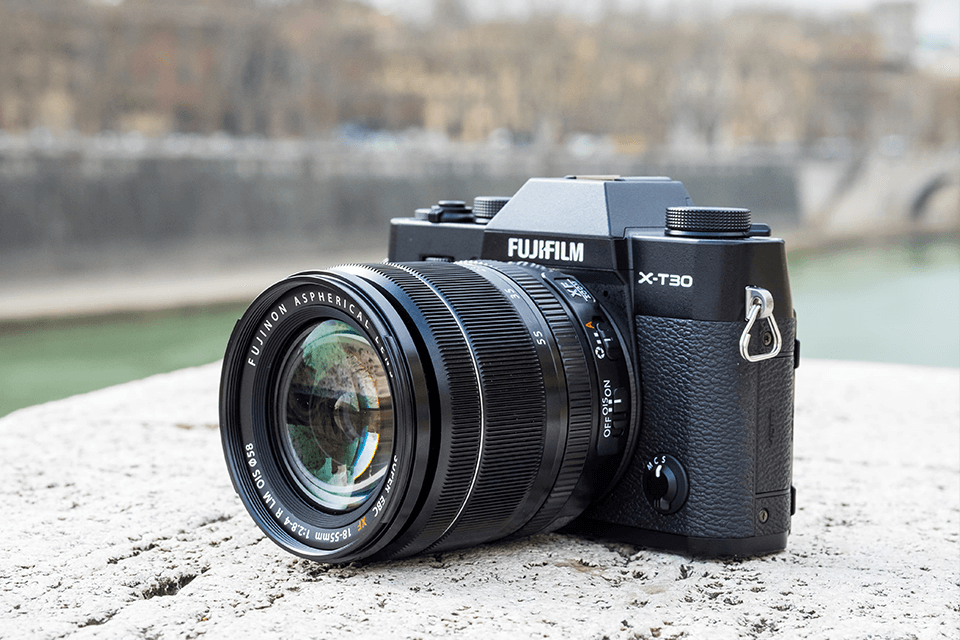
One of the key selling points of the X-T30 is its streamlined UI. What makes it the best Fujifilm camera is that it enables you to quickly find everything you need and adjust the necessary settings without wasting a lot of time. When configuring the settings, you can experiment with dials and buttons to make manual adjustments.
This mirrorless camera has decent AF capabilities. It can quickly detect faces and eyes at a long distance, which enables it to deliver better performance than its competitors. Using it, you can take detailed pictures, which makes it quite handy for those who take portrait photos or capture moving subjects.

Taken with Fujifilm X-T30
Another thing that impressed me about this camera is that it reproduces colors with high accuracy. Even if you use default settings, your photos will have nice warm tones. You can change the color temperature depending on your needs.
As I have been working as a photographer for years, I tried using a variety of cameras. For a long time, the Fujifilm X-T20 was my favorite camera. However, when the company unveiled the X-T30, I realized that this model surpassed its predecessor while keeping some of its best features.
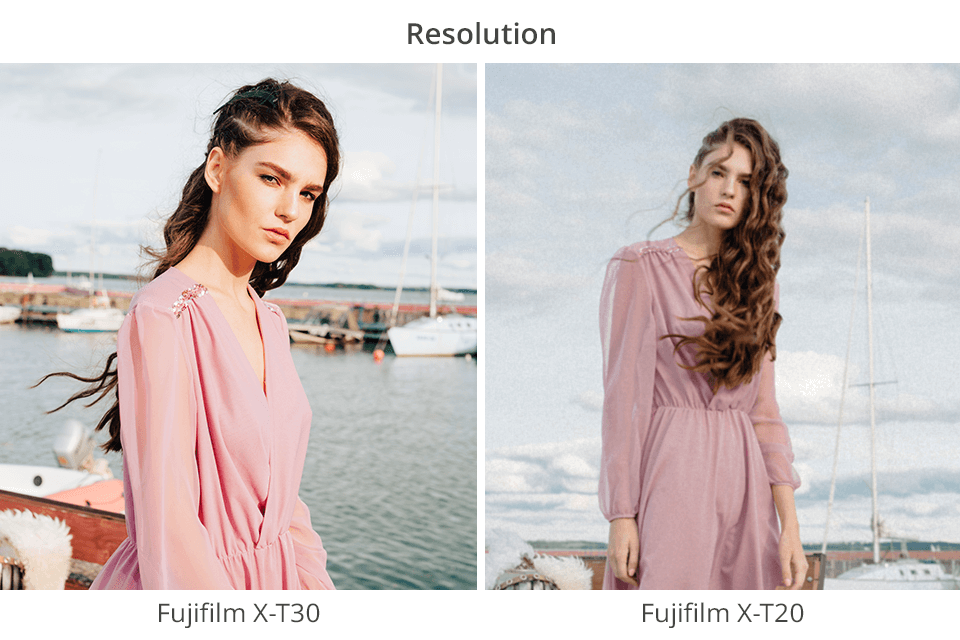
The first thing that strikes me as important is that the X-T30 has an upgraded image sensor that supports better resolution. While the X-T20 has a 24.3MP sensor, the new model has an upgraded 26.1MP sensor. It makes this camera suitable for taking more detailed photos that you can enlarge and crop as you see fit.
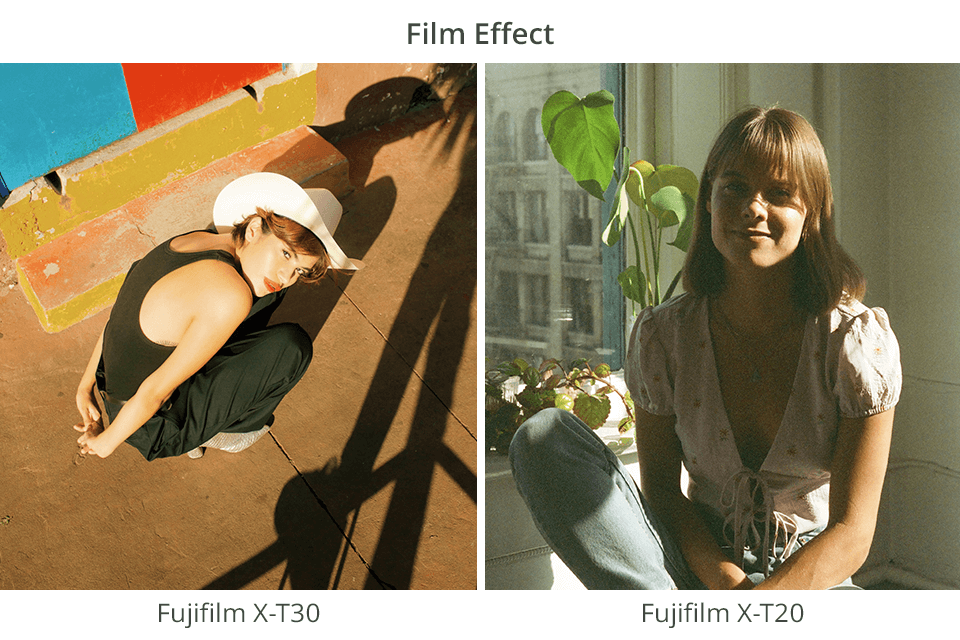
Fujifilm is famous for its variety of film simulation modes. While both the X-T30 and X-T20 allow you to switch between them, the newest model also has the ETERNA mode created specifically for cinema cameras released by the company. When using this feature, you can perform color grading like a pro and enjoy a better dynamic range. Due to this, you can add a cinematic feel to your photos and videos.
Another thing that I like about the X-T30 is its powerful AF system, which makes it a better choice than the X-T20. It demonstrates higher accuracy, which allows photographers to use this camera in difficult shooting conditions.
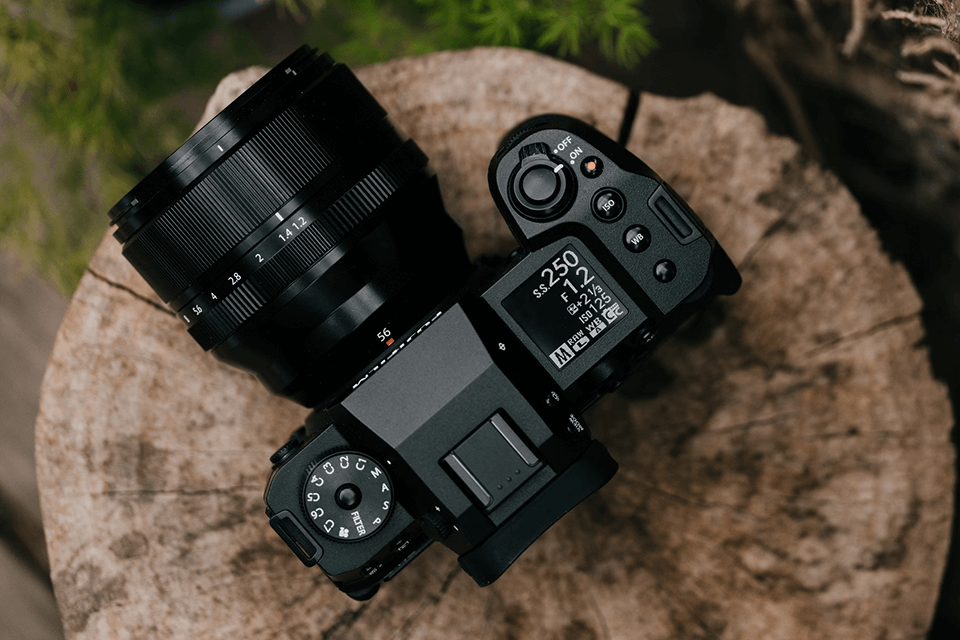
The Fujifilm X-H2 is equipped with a powerful 40MP BSI-CMOS sensor, which enables photographers to take high-resolution pics for printing and enlarging. It also supports 4k and 8k video shooting, which makes it suitable for those who want to capture high-quality footage.
This is the best Fuji camera in its price range as it features the X-H2 AF system that stands out for its high speed and precision. It includes Phase Detect and Contrast AF. Besides, you can use AI-driven tools for subject tracking. The camera enables you to preview your photos in real time to adjust exposure.

Taken with Fujifilm X-H2
While this camera has a quite decent feature set, it is hardly suitable for those who are on a budget as it has a high price. This makes it a less appealing option than other mirrorless cameras for video available today. In addition, it is not suitable for travel photographers as it weighs a lot and is quite bulky.

What I like the most about X-T5 is that it enables me to adjust all the settings by myself. As I like classic photography, I enjoy configuring everything manually depending on the shooting situation.
The 40MP sensor allows for taking high-resolution pictures and videos with vibrant Fuji colors. Thanks to the X-Processor 5, you can take detailed photos at high ISOs.
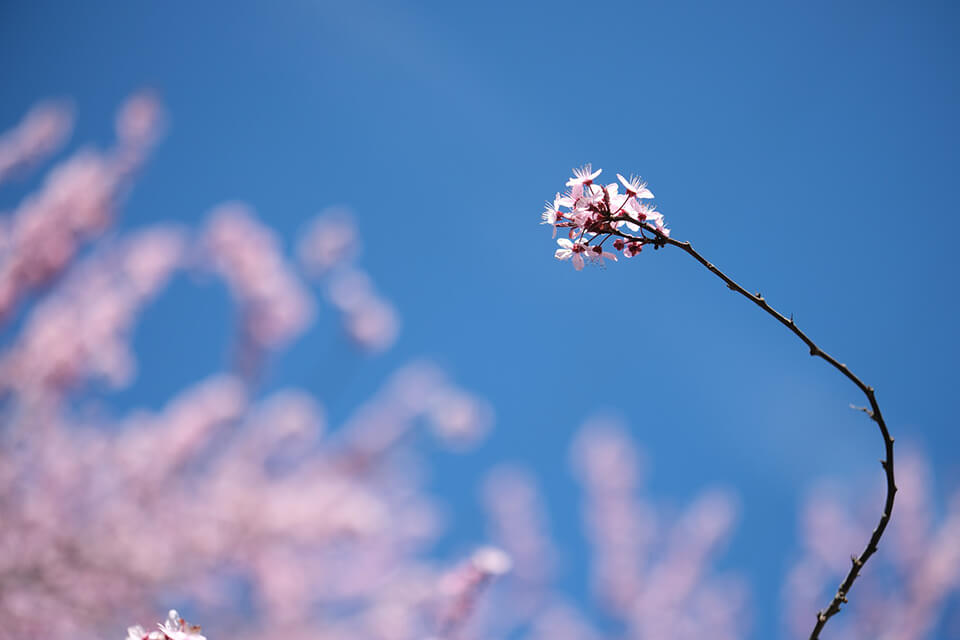
Taken with Fujifilm X-T5
You won’t face any inconveniences when using this camera as it is fitted with a tilting 3-inch touchscreen LCD. As it has a 1.84M-dot resolution, you can easily preview your pictures. This feature makes this model more impressive than the best Fujifilm cameras with APS-C sensors. Thanks to upgraded 5-axis in-body image stabilization (IBIS), you can use up to 7 stops to minimize the effect of camera shake.
However, when using this camera, you might notice that battery life is rather limited. You can take up to 740 photos per charge. Besides, you might be dissatisfied with a slow AF performance.
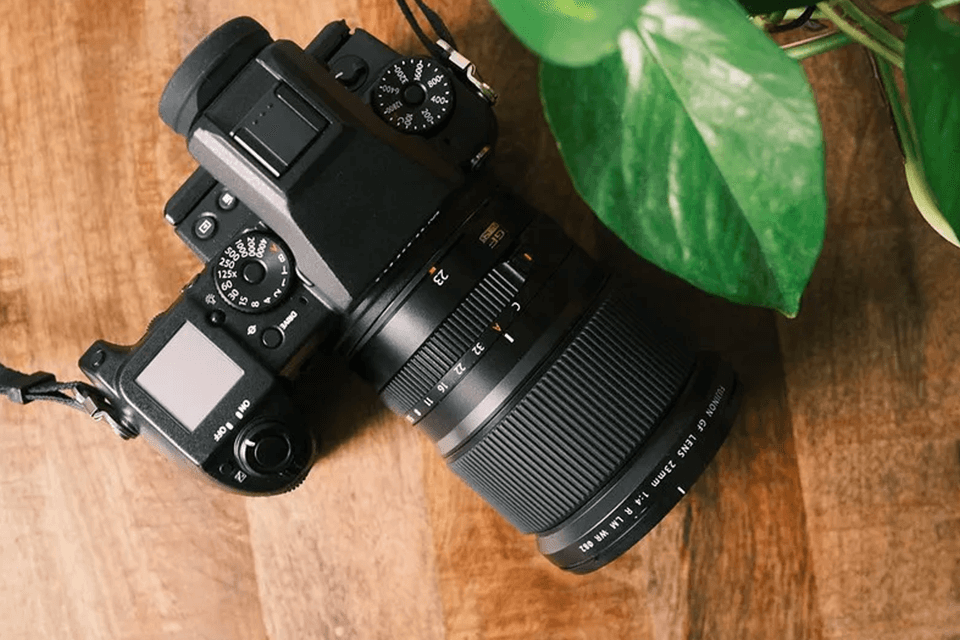
The Fujifilm GFX 50S is a truly impressive medium format camera that allows photographers to snap excellent pics with ease. Featuring a 51MP sensor, it is suitable for capturing detailed textures and has a wide dynamic range. You can choose any of the available 19 film simulation modes. The model has a pro-grade AF and a large choice of exposure settings.
You will enjoy its accurate AF with great contrast detection. Using this model, you can detect faces and eyes as well as track moving subjects. Its X-Processor Pro image processing engine speeds up its sensor and makes it more powerful.
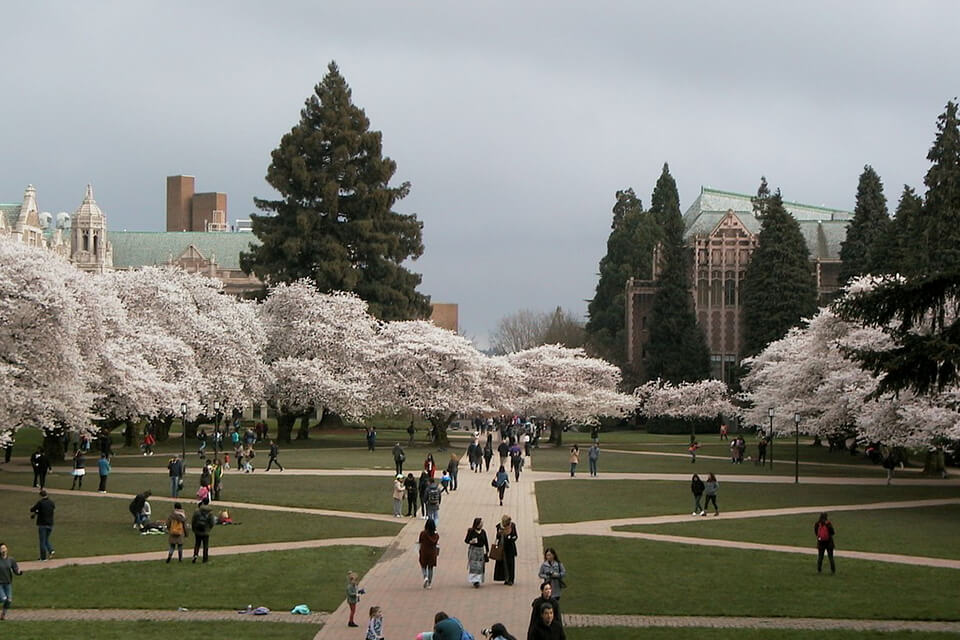
Taken with Fujifilm GFX50S
Despite its obvious advantages, this best Fujifilm mirrorless camera has some limitations as well. For instance, its continuous shooting speed is rather low at 6fps. Besides, it does not allow for recording 4K videos. While the GFX 50S is still quite useful for different shooting scenarios, you should take these shortcomings into account to make the right choice.

Photographers who prefer to use this Fujifilm mirrorless camera value it for its high burst speeds and pro-level image quality. It is suitable for many uses, which is why you can use it for taking landscape, travel, portrait, and other photos. The camera allows you to switch between 18 film simulation modes and capture 4K video footage. It makes it a nice option for enthusiasts.
In addition, this camera leverages its X-Processor 4 to minimize rolling shutter distortion and increase read speeds. It supports 5-axis image stabilization, which enables photographers to take detailed images regardless of the shooting conditions.
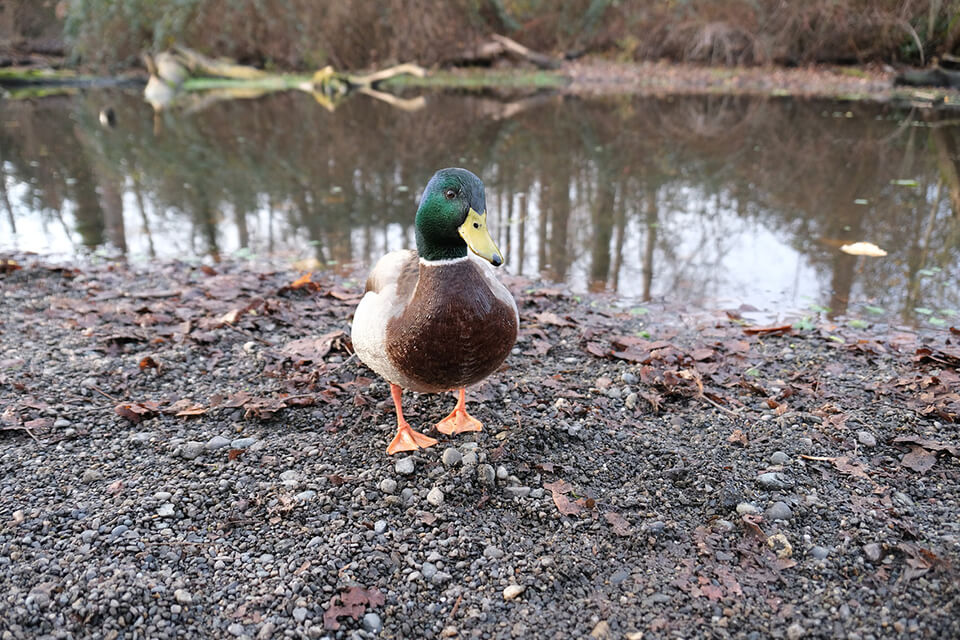
Taken with Fujifilm X-S10
Despite numerous benefits, this mirrorless camera for travel has some disadvantages as well. For instance, you might be displeased with its short battery life.
Besides, it might take you a while to learn how to use its joystick to adjust the focus. However, you will enjoy using the feature as it can significantly streamline your workflow.
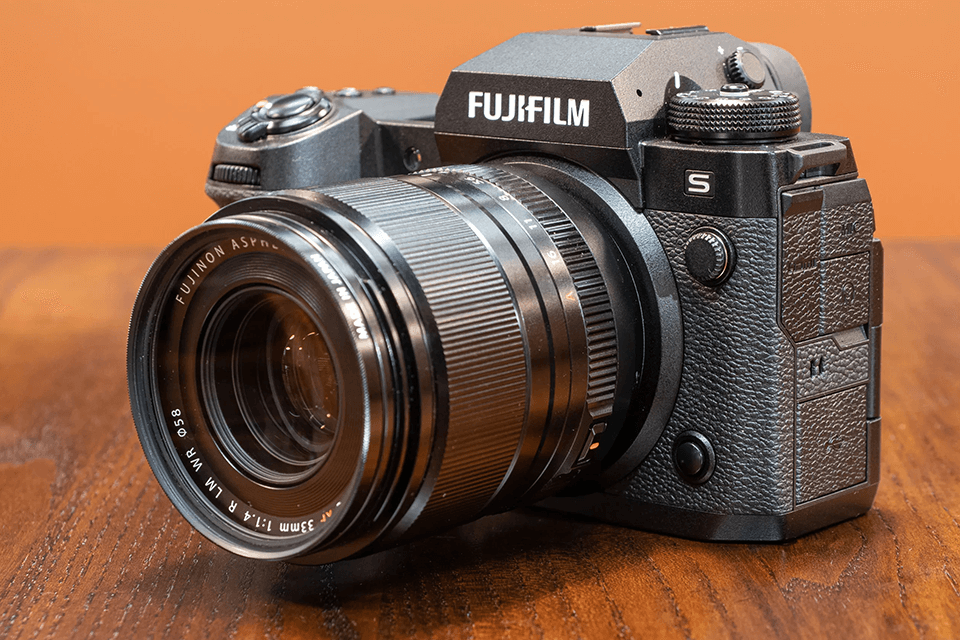
The Fujifilm X-H2S has an advanced set of hardware components, such as an innovative 26MP backside-illuminated stacked sensor and the X-Processor 5 processor. This configuration enables photographers to enjoy better image quality and high readout speeds.
What makes X-H2S a worthy option to consider is that it supports continuous shooting at 40fps, which enables photographers to capture moving vehicles. The camera supports precise subject tracking. Due to this, it can be useful to action photographers. Besides, this camera is suitable for recording ProRes and Blackmagic RAW due to the support of external recorders. This feature makes it the best Fujifilm camera for video enthusiasts.

Photo by Fujifilm X-H2S
What makes the X-H2S different from other similar models in this price range is that it has a speedy 26MP X-Trans CMOS sensor, which enables photographers to take photos of stunning quality. This camera for photography also has an excellent AF. After the recent upgrade, it enables you to perform perfect subject tracking and face/eye detection, which makes it a suitable option for portrait photographers.
As this camera has a backside-illuminated sensor, you can use it for taking high-resolution photos with a low level of noise. Another benefit of this model is that it has speedy AF.

This Fujifilm full frame camera is a great value for the money as it comes with a 100-plus megapixel sensor, allows shooting 4K video, and has in-body image stabilization.
What makes this model one of the best options on the market is that it is fitted with the X-Processor 4 processor powering its image-processing engine. Thanks to its quad-core CPU, the GFX 100S supports high-speed image processing. This Fujifilm full frame camera enables you to take excellent photos when capturing images in difficult lighting situations.
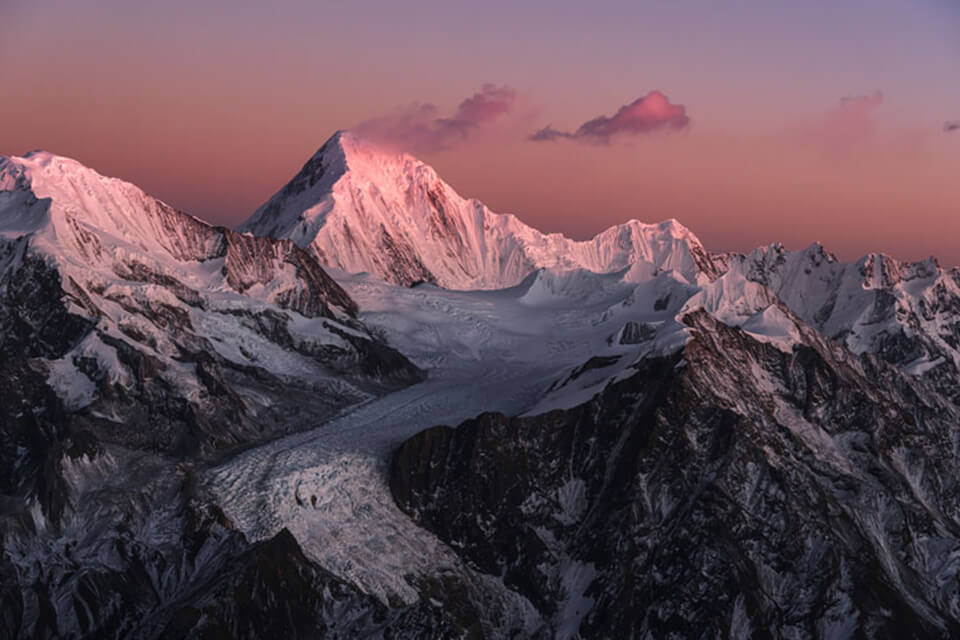
Taken with Fujifilm GFX 100S
Another selling point of this model is that this dynamic range camera supports 16-bit color depth, which enables photographers to capture 65,536 shades of RGB spectrum. It makes it better than models that support the 14-bit color depth. Due to this fact, the GFX 100S supports 281 trillion colors.
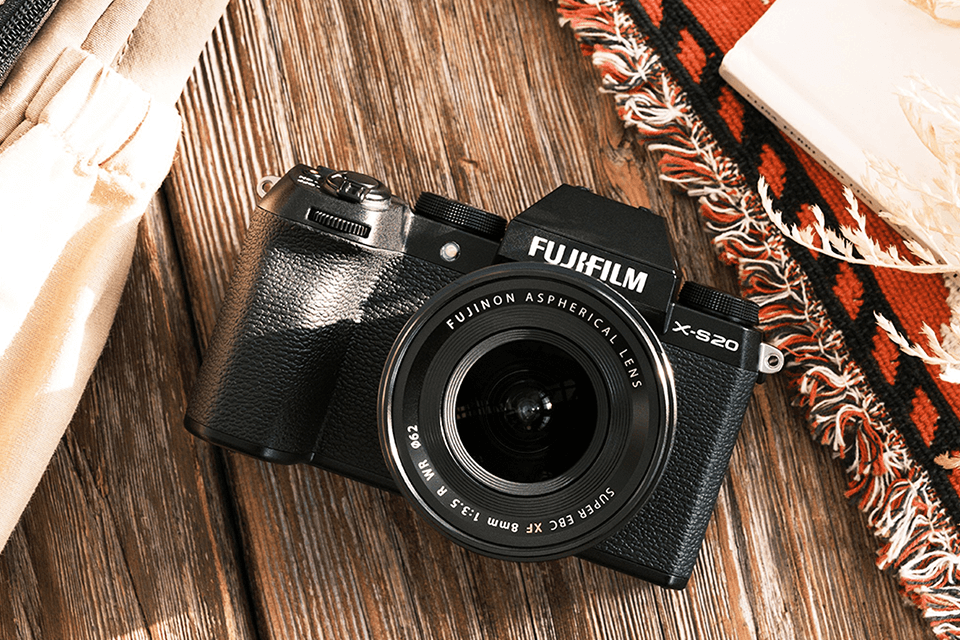
The Fujifilm X-S20 is quite small and weighs less than one pound, which enables photographers to use it wherever they go. It will easily fit into your pocket. The X-S20 features only one SD card slot and comes with a handy Fujifilm battery.
What makes the X-S20 a worthy option to consider is that it comes with a great subject-detection feature. The model is based on the X-Processor 5, which enables it to automatically switch between scene settings depending on the shooting situation. The camera can recognize people, moving vehicles, and other subjects with ease. The impressive subject tracking feature makes it perfect for those who want to do travel photography, capture action pics, or take photos as sports games.

Taken with Fujifilm X-S20
While it is not the newest Fujifilm camera, this model is best suited for beginners who make their first steps in photography and want to enjoy the process to the fullest. Besides, it allows you to take pictures of great quality.
This camera was created for those who want to experiment with different lenses to achieve the desired result. It’s a great choice for travel photographers and people who want to create engaging social media content.
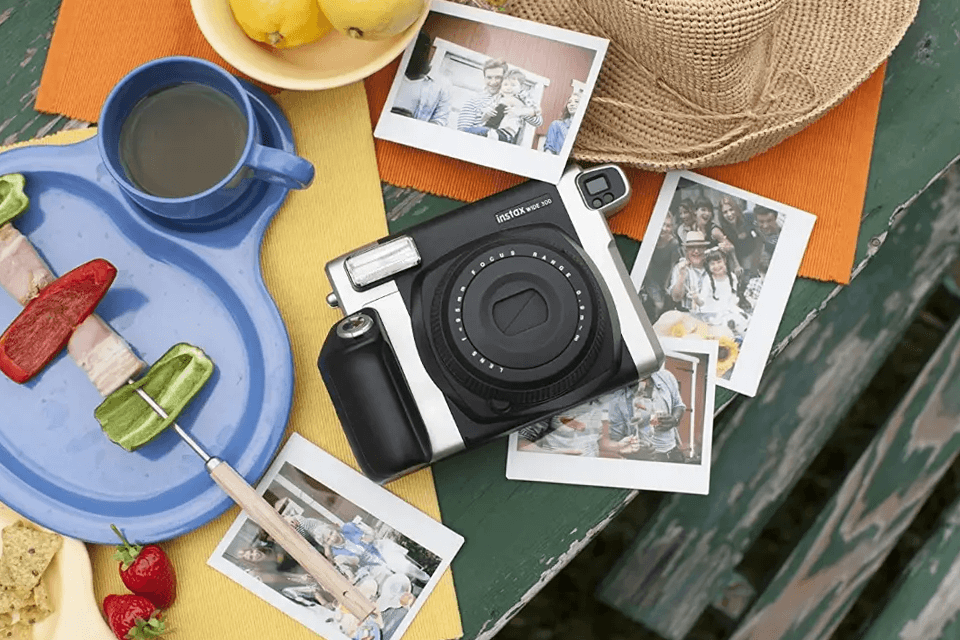
If you don’t need a camera for professional use and don’t want to spend a lot of money on expensive equipment, take a look at the instant camera from Fujifilm. This model is fitted with a 95mm f/14 lens and an optical viewfinder. It enables you to achieve a perfect balance between light and dark areas.
The Fujifilm Instax Wide 300 allows you to use a wide film, which makes it a rare find for landscape photographers. You can take pro-level landscape photos and pictures of a group of people without using an advanced camera body with pricey lenses.

Taken with Fujifilm Instax Wide 300
It doesn’t have some handy tools that you can find in other models. For instance, you can’t adjust the shutter speed or switch to bulb mode. Due to this fact, this camera is hardly suitable for professional photographers who want to adjust settings manually before taking their photos.
Besides, the plastic camera body is too large to hold it in the hand. If you want to use your camera on the go, you might want to use other Fujifilm models.
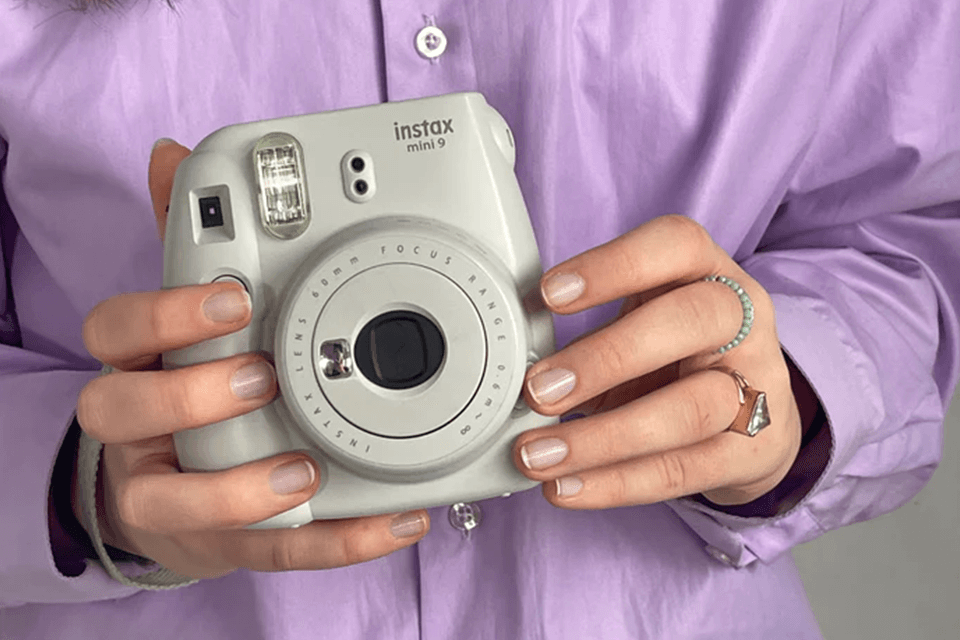
The Instax Mini 11 is the best Fujifilm camera for beginners who want to give film photography a try. You can easily take this portable model with you anywhere, which makes it especially useful for those who want to capture candid moments.
The auto-exposure feature is quite precise. You can easily adjust the lens to take beautiful portrait photos, close-ups, and selfies. Switching between different models, you can take photos of better quality. In addition, this camera has a useful automatic flash control feature.
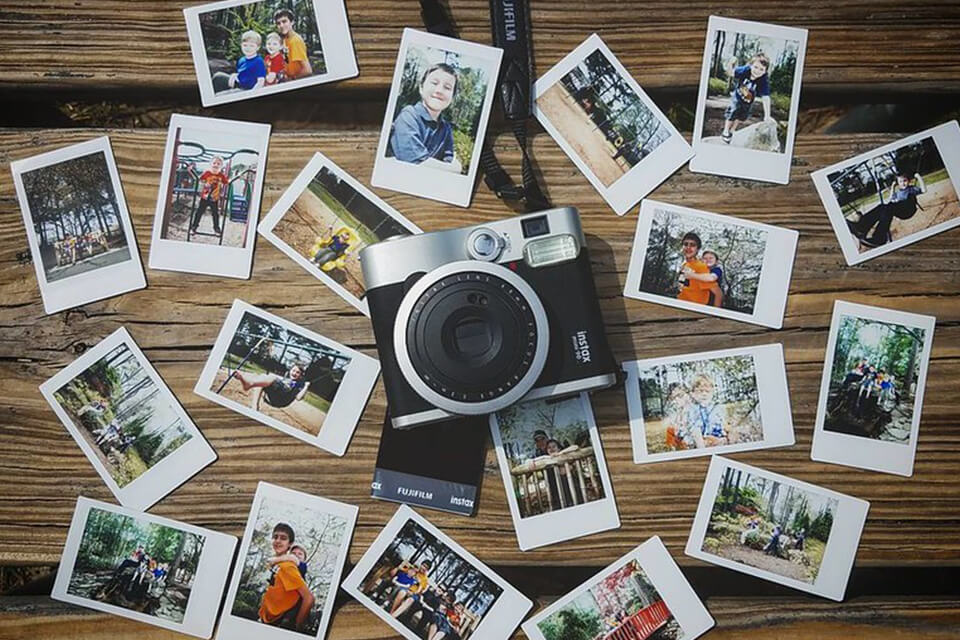
Taken with Fujifilm Instax Mini
However, this Fujifilm camera has also some noticeable shortcomings. While many photographers like its AF system, its accuracy is not always at the top level. Using this camera, it might be difficult to focus on faces or small details.
Besides, the camera is fitted only with two buttons, which makes it challenging to switch between different settings. Film for this camera costs quite a bit, so it is hardly suitable for budget-conscious people.
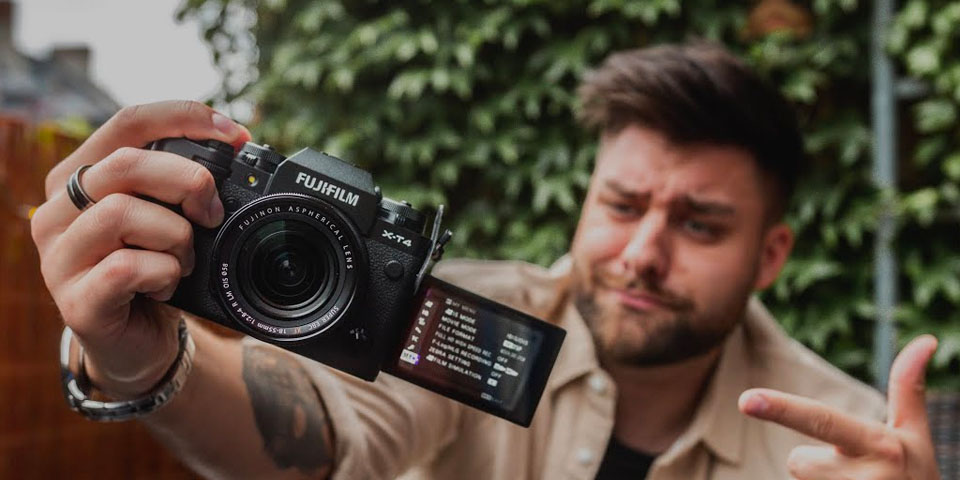
Sensor - 35mm full-frame sensor type. When selecting a camera, it’s important to consider its sensor, as it may significantly affect image quality. You should pay close attention to it if you are going to use your photos for large-scale prints, as they should remain detailed even when you enlarge them.
Pro-level Fujifilm cameras are fitted with APS-C X-Trans sensors, which are considered one of the best available on the market today. Cameras with such filters stand out for the high quality of pictures, superb resolution, and impressive detalization, which makes them better than other models with APS-C sensors available today.
Optical viewfinder. Fujifilm cameras, especially those that were released as a part of the X series, often come with eye-level viewfinders that allow you to enjoy superb resolution. Using them, you can enjoy the shooting process to the fullest. Besides, you will feel like you are using a good film camera.
A hybrid viewfinder is also a great option to consider, as it makes it easy to switch between an optical and electronic viewfinder depending on the situation.
Autofocus. Fujifilm's X-series models are valued for their Dual Pixel AF. This advanced technology accounts for better AF speed and accuracy. Thanks to photodiodes in a pixel on the image sensor, you can quickly focus on your subject with high precision even when the lighting is dim. This AF makes Fujifilm a better choice than many other camera brands.
If you take a look at the Fujifilm camera reviews posted online, you will see that many photographers praise AF on DSLR as it is better suitable for shooting objects that move quickly.
However, when you switch to the Live View mode and take a look at the preview on the display, you will see that its quality is worse than the quality of images captured by a mirrorless type of camera. Most Fuji cameras feature contrast AF with the elements of phase one on the matrix. It ensures that a photographer can use them to quickly focus on the subject with high precision.
Optical image stabilization. It becomes invaluable when you need to remove blur. Due to this, a photographer can shoot moving objects or take photos in poor-light situations.
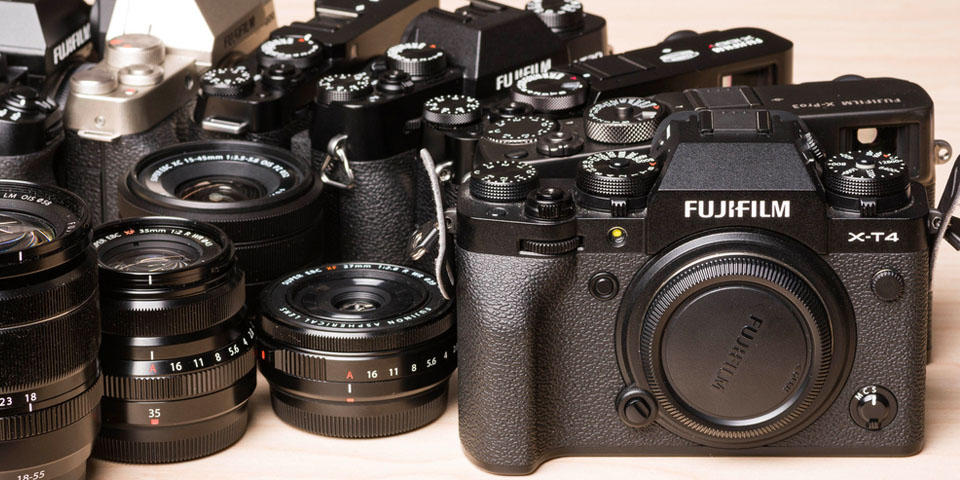
Lenses. There are two types of lenses, so you can either buy a lens with a fixed focal length or opt for a lens that allows you to zoom in on objects. You can find plenty of lenses of different types that are compatible with mirrorless Fujifilm cameras. In addition, you may use special adapters to use Fujifilm camera bodies with lenses released by third parties. For instance, if you are in the mood for taking creative photos, you can use a manual Helios or Leica lens.
Film simulation modes. Fujifilm models allow you to take photos that look like they are taken with film cameras. Using a variety of film simulation modes, you can recreate the colors of Velvia, Provia, and Astia films. Thus, you can achieve the film effect without buying a film camera, which makes such models perfect for the fans of retro photography.
Price. Fujifilm models, including popular rangefinder cameras cost quite a lot, however, they have many handy features. The price for a camera body ranges from $1000 to $6000. Some camera bodies come with a kit lens, which makes their prices higher by up to $500.
Yes, many Fujifilm cameras are fitted with easy-to-use controls, which makes it easier to navigate their menus. They stand out for the high quality of JPEG photos and enable photographers to recreate the classic film effect to take visually appealing photos with a dreamy atmosphere. Thanks to such advanced options as Face and Eye AF, you can easily focus on the face of a person or take stunning landscape pics. For instance, the X-H2 leverages pro-level AF technology, which enables users to adjust the settings to their liking and perform subject tracking with little to no effort even if objects move quickly. It also supports 4K video recording and enables you to enhance your footage using in-built tools.
Such models have a convenient design and simulate the film effect, which makes them especially suitable for those who are interested in photography. You will be impressed with the quality of the photos. Such cameras are comparable to DSLR models like Nikon and Canon. Another advantage of Fujifilm cameras is that they have an ergonomic design, which enables photographers to use them for a long time. You can buy the best Fujifilm camera that suits your skills, from models for beginners to more advanced options for professional use. Due to this fact, you can select the most suitable camera for your budget and needs.
There are plenty of lenses compatible with Fujifilm cameras. When looking for Fuji lenses, make sure to take into account their focal length and aperture. Besides, you should think about what photos you are going to take. The lenses released by this company stand out for their optical quality, which enables photographers to take photos with rich colors and without any noticeable blur.